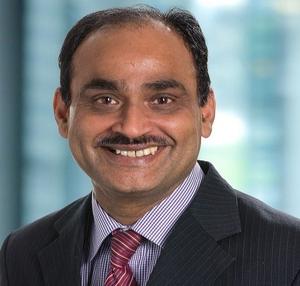CIO50 2022 #26-50 Raju Varanasi, Catholic Education Diocese of Parramatta

Finding better ways to improve student learning outcomes is one of society’s biggest challenges.
But for Raju Varanasi, chief information officer and director data intelligence with Catholic Education Diocese of Parramatta, many of the solutions are there plain to see in the data.
He and his team have led a transformational data-driven strategy that has spanned triangulation of data sets, collaboration with dashboards and the deployment of new automated machine learning (AML) projects.
He tells CIO Australia that accessing data is one thing, but bringing them all together to genuinely enhance user experiences and outcomes is quite another.
‘You can have lots of data sets, but in themselves, they don’t mean anything unless you triangulate them, combine them using identifiers so that you can start making a story, then you can get some intelligence out of it and see a holistic picture," he says.
Applying a ‘six-lens’ approach, Varanasi and his team have harnessed data to first drive analytics, then extract insights leading to the gathering of actual intelligence.
“These data can show students from a demographic, performance, well-being, and attendance perspective in the learning process."
For example, attendance data revealed that a male student was absent every Tuesday – sports day - prompting an investigation. The teacher reached out to the parent and discovered that as couldn’t afford sports shoes, the child skipped school on this today to avoid embarrassment. The school’s principal intervened and purchased a pair of runners.
Key attributes
But the main focus is on helping teachers shape their teaching styles and interactions with students, in particular to help improve final year results.
Using 41 key attributes extracted by Varanasi and his team, teachers at the school are able to predict with more than 93% accuracy what a student will score, helping them better identify areas for improvement.
He notes the five most important attributes identified by the system are whether the student is a recent migrant, if they’re from a certain family configuration, in a single parent family, their gender and how long the student has been in the schooling system.
The machine understands all this from past data on some 30,000 students who completed the HSC in the last 10 years.
“These 30,000 students have taught us something, but as a human, it’s almost impossible to make sense of this information and that’s where machine learning comes into play,” Varanasi explains.
“For me, data must see the light of the day, and data has to bring vibrancy in the interaction. And it’s doing that.”
Varanasi says he’s never been in any doubt about the power of data and analytics to affect positive change within the education system.
“What once took months to know a child as a learner, now takes only a day or a week. This has completely enabled the learning and empowered the learning space,” he says.
And for students, this means the school and their teachers have far deeper insights into the factors that influence their academic performance, allowing for the creation truly personalised – and vastly more effective – education journeys leading to better results and better futures.
“Data can be used to better prepare students for their next steps, to allow flexibility for each student to get ready for the next phase of their learning during Year 12 and ensure they thrive in their future career aspirations,” Varanasi notes.
“It becomes an individualised journey that better prepares young people for life beyond school."
David Binning